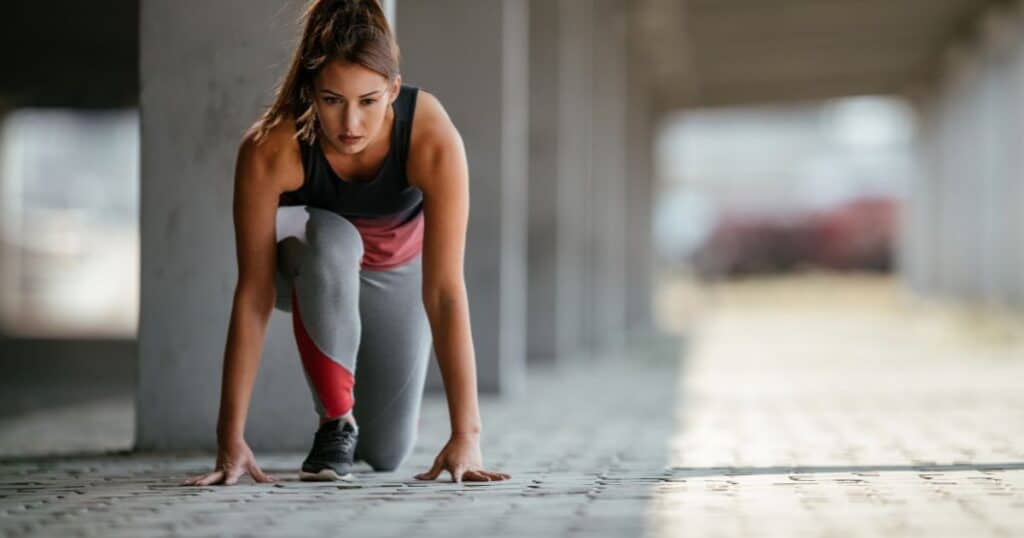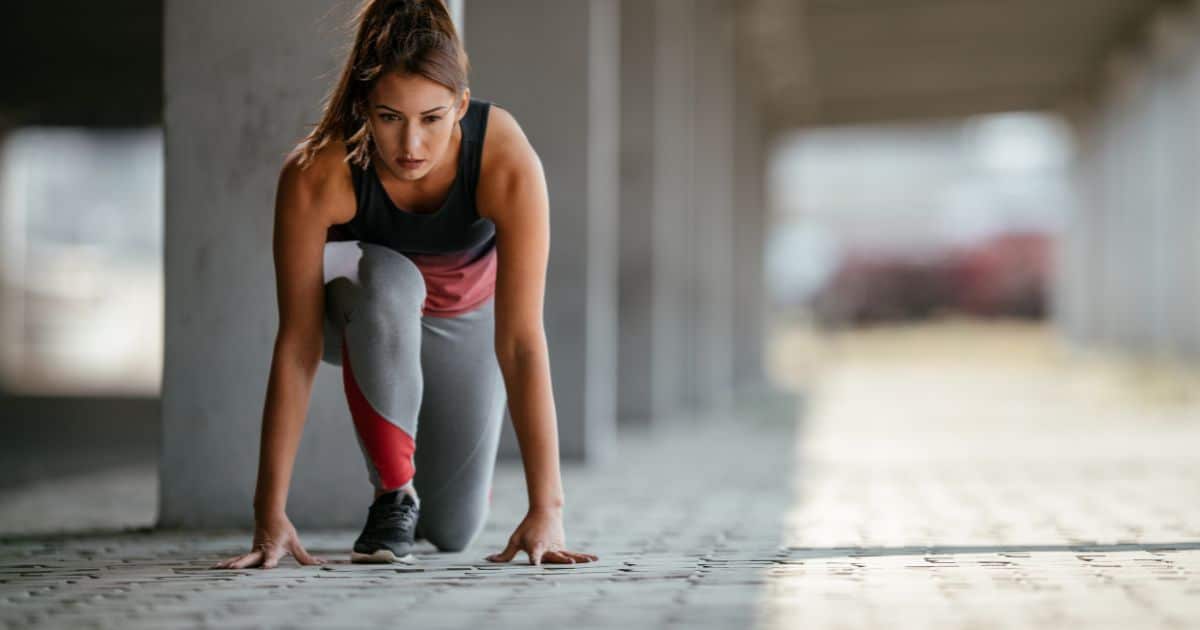RUNNING →
Level Up Your Nutrition Game With Our Freebies
Alex
I provide nutrition coaching for endurance athletes to improve performance and body composition through a simple and flexible eating style.
Hi, I'm
ATHLETE EATING GUIDE →
PROTEIN →
TRIATHLON →
RECIPES →
PERFORMANCE NUTRITION →
SUPPLEMENTS →
HOLIDAY & TRAVEL →
PLANT-BASED →
FEMALE ATHLETE NUTRITION
Explore the Blog
LEARN MORE →
ATHLETE GROCERY SHOPPING GUIDE →
RACE DAY: TRIATHLON NUTRITION PLANNER →
READY TO FUEL?
incredible value!
The fueling guide bundle serves as your one-stop-shop for strategies to fueling before, during and after your workouts.
ENDURANCE EATS
BINGE-WATCH READY!
YOUTUBE SERIES
For female endurance athletes, losing your period should not be the norm. It is not a rite of passage as a female athlete, nor is it a badge of honor. Unfortunately, there are both short and long-term consequences of losing your period. If you are currently struggling with missed periods, let’s review how to get your period back. Making the changes detailed below will help get you back to your training routine feeling well-fueled, strong, and most important healthy.
Amenorrhea in Endurance Athletes
Amenorrhea is a term used to describe the lack of a menstrual period. Notably, there are two types of amenorrhea: primary and secondary. Primary amenorrhea is the absence of a period by the age of 16 years. Secondary amenorrhea is a condition in which a woman who has begun menstruation suddenly stops having a period.
While there are many causes of amenorrhea, in athletes it is sometimes referred to as “exercise-associated” amenorrhea. This occurs when a woman does not have a menstrual cycle for at least 3 months either because she exercises too much, eats too few calories, or both. While other factors can precipitate this, these are the contributing factors I see most often working with endurance athletes.
In order to have regular periods, women need to consume a certain number of calories and maintain around 18% or more body fat. If a woman has too little body fat, the ovaries stop producing estrogen and will result in a loss of period.

Importance of a Regular Menstrual Cycle
Your menstrual cycle helps your body prepare for pregnancy every month. Regular monthly periods between puberty and menopause mean your body is working normally. While most women dread the hormonal fluctuations that come with menstruation, the good news is it means your body is healthy.
Irregular periods, often referred to as dysmenorrhea, or amenorrhea may result from a variety of factors. The most common factors negatively affecting regular menstruation include: a family history of dysmenorrhea/amenorrhea, increased stress, and/or body weight factors including being severely overweight or underweight, and RED-S.
According to the Mayo Clinic, certain kinds of birth control, including extended-cycle birth control pills and intrauterine devices (IUDs), will change a menstrual cycle. Certainly other health conditions including polycystic ovary syndrome, uterine fibroids, among others can influence menstrual regularity.
RED-S: An Overview
Most often, RED-S seems to be unintentional. An endurance athlete wants to get faster and society dictates that the precedent to getting faster is being lighter. RED-S can be caused by one or a combination of two things: not eating enough and/or exercising too much. When there is an imbalance in your dietary intake vs. energy expenditure, you can start to experience impaired bodily functions. Next, your body will begin adjusting your body systems to compensate for the lack of energy. This can have metabolic, hormonal, and functional effects.
Disordered eating, such as extreme weight loss methods and restrictive diets, is one of the main causes of RED-S. Many endurance athletes feel the need to restrict their calorie intake or lose weight in order to be the best athlete they can be. But this can actually do more harm than good. Your body needs fuel to be successful!
The signs and symptoms of RED-S can look different for every athlete. These symptoms can often fly under the radar and go unnoticed by athletes. Because of this, the disorder is frequently undiagnosed.

In general, here are a few RED-S signs & symptoms to look out for:
- Fatigue
- Difficulty concentrating
- Rapid weight loss
- Frequent illness/infections
- Hair loss or thinning hair
- Cold hands/feet, trouble staying warm
- Missed periods (female athletes)
- Dehydration
- Increased injuries
- Mood swings (irritability, anxiety, depression)
RED-S and amenorrhea are fortunately reversible.
The Role of Nutrition in Restoring Menstrual Function
There are several important nutrition considerations if you are struggling with amenorrhea. The following nutrition goals should be emphasized if you want to get your period back:
Create balance with your nutrition
Create a balanced nutrition plan by emphasizing all macronutrients including protein, healthy fats, and carbohydrates. If you are struggling with fueling enough, small more frequent meals and snacks (including a bonus snack daily) may be ideal. Be sure to include protein-rich foods at most meals and snacks, particularly post-workout. If you are a plant-based athlete, reference our guide on plant-based proteins. Consider adding an extra scoop of Greek yogurt or cottage cheese with your morning smoothie or add an extra handful or edamame in a DIY high-protein trail mix.
Optimize healthy fats
Healthy fat sources will help with absorption of fat-soluble vitamins. Examples of healthy fat food sources include olive oil, nuts and seeds, olives, avocado, flaxseed, and chia seeds. Fat contains more calories (9 calories per gram) than protein and carbohydrates (4 calories per gram). Therefore, it’s an easy way to boost calorie intake without dramatically increasing the volume of food. To boost your fat intake, consider smothering your morning oatmeal bake or pancakes with an extra spoonful of nut butter. Or toss an extra serving of chia seeds in these super easy no-bake energy bites.

Increase bone building nutrients
Increase your intake of calcium and vitamin D consistently. Athletes being treated for amenorrhea should increase their calcium intake to 1500 mg daily and vitamin D intake to 400-600 IU daily. Food sources of calcium include dairy products, fortified plant-based milks, leafy greens, nuts, beans, tofu, and edamame. If this amount cannot be achieved from diet, calcium supplementation may be warranted.
Please note: that excessive intake of protein when combined with inadequate calcium intake and high intakes of caffeine may compromise calcium absorption.
Especially for individuals who live in northern regions with less sun exposure, it is extremely difficult to receive enough vitamin D in the diet. Furthermore, few foods are rich in vitamin D3. Vitamin D is extremely important for maintaining healthy bones and also is important for anti-inflammatory and antioxidant properties. The best food sources are the flesh of fatty fish and fish liver oils and smaller amounts in egg yolks, cheese, and beef liver. Supplementing with vitamin D3 can help most individuals maintain normal vitamin D levels.
Max out micronutrients
Optimize your micronutrient intake. Research shows that for women with amenorrhea, the most common micronutrients to be low, in addition to calcium and vitamin D, are B vitamins, iron and zinc. Fortunately, these nutrients are found in red meats, poultry, beans, lentils, whole grains, and fortified breakfast cereals. Consider preparing a micronutrient-rich batch of bean burritos for your busy on-the-go lifestyle. Or add in extra turkey sausage or bacon into these easy egg muffins that are delicious any time of the day!
While my team and I encourage a flexible, foods-first approach to nutrition, supplementation may be warranted at times. If you are not already, now may be a good time to consider taking a multivitamin supplement to help fill micronutrient gaps.

A supplement brand that I love and trust is Thorne Research! You can use this link to get 15% off your order. The whey protein isolate and liquid vitamin D are a couple of my personal go-to’s.
It is also best practice to discuss any specific supplementation routine with your primary medical care provider for more specific dosage guidelines. Your medical care provider also has access to your full medical history and medications, which is important to consider when starting any nutrition supplements.
Exercise and Training Modifications for Amenorrhea
Many endurance athletes rely on exercise for the mental-boosting benefits, if not more than the physical benefits. Though we can certainly appreciate the vast advantages exercise can provide endurance athletes, you may need to adapt your training and racing schedule. Adapting and decreasing your training load may be crucial to getting your period back. Furthermore, you may also need to incorporate more rest days (even weeks) into your training schedule. You may also want to consider cross training or diversifying your exercise schedule to decrease overall stress load from training.
Building a Supportive Network

Research shows that athletes with amenorrhea have lower bone density and a greater incidence of stress fractures. Because the risk of bone loss increases with the duration of amenorrhea, a dual energy x-ray absorptiometry (DEXA) scan should be considered in athletes with amenorrhea lasting at least 6 months.
It is important to note that if you are struggling with getting your period back, you need a supportive network of individuals on your side. A collaborative effort among coaches and athletes, physicians, physical therapists, and your support team (family, friends, teammates) is optimal. Your support team can better help with the recognition, treatment, and prevention of RED-S and amenorrhea. Your team can get you on the path to getting your period back.
Patience, Persistence, and Self-Care on the Road to Recovery
If you are an endurance athlete struggling with amenorrhea, you are not alone. It is important that you educate yourself and take the right steps when researching how to get your period back. Please understand that this simply may take patience and time, which can be the hardest part, especially when you are on the sidelines.
Working with a qualified sports dietitian can certainly help. If you need extra guidance on how to properly fuel your body during any of life’s changes (including menstrual changes), my sports dietitian team and I are here to help! We are an all-women team who specializes in helping athletes take their performance nutrition to the next level. Apply here today to secure your spot!
Alex
I provide nutrition coaching for endurance athletes to improve performance and body composition through a simple and flexible eating style.
Hi, I'm
LEARN MORE →
take the quiz!
Let's discover your Endurance Nutrition IQ
How well do you know your fueling? Answer these questions and let's see where your endurance nutrition knowledge is at!
Take the quiz
level up your nutrition game with these freebies
free downloadS
Protein-Packed 10-Day Sample Meal Plan
Athlete Eating Guide
Athlete Grocery Shopping Guide
1
2
3
Inspiration to fit 120 grams of protein into your day
Planning what goes on your plate
Putting the right foods in your grocery cart
